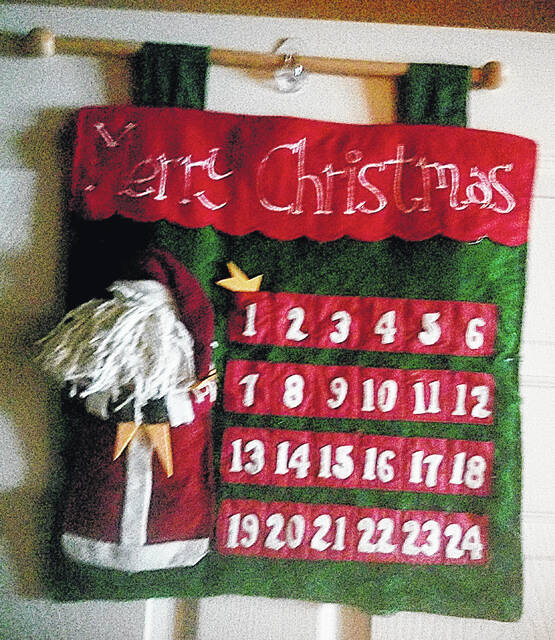
Some Americans and people all over the world use Advent calendars as part of their Christmas traditions. Advent is derived from the Latin phrase “arrival” or “coming toward.” Advent calendars are a way to count down the days till the celebration of the birth of Christ or Christmas Day.
German Lutherans used to draw chalk marks on their walls or doors from the first of December until the 24th. The marks would indicate the passing of each day leading up to the religious celebration.
It is believed the tradition of Advent calendars was started my Gerhard Lang’s mother, who placed 24 chocolates on a piece of cardboard for her son to count down the days until Christmas.
In the early 1900s, Gerhard Lang was a publisher in Germany and, remembering the tradition his mother started, he produced the first professional Advent calendar. Lang added little doors to create an element of surprise.
These Advent calendars were produced until the 1930s when cardboard was rationed due to World War II. This forced the company to close.
After the war, Richard Sellman, also from Germany, began producing Advent calendars again filled with chocolates. His German company continues to produce Advent calendars today.
Advent calendars became popular in the states when President Eisenhower was pictured with his grandchildren and an Advent calendar.
In 1970, the Cadbury Company began producing Advent calendars. They can be as simple as using a figure of a mouse or a star to count down the days, placing the figure in a little pocket denoting each day.
Another Christmas tradition is luminaria. Today, luminaria are usually small brown paper bags, lined with sand and a candle placed inside. They are often sold by organizations to raise money. They may be used at an individual’s home or for a community festival, such as the one held in Leesburg every year.
Luminaria date back about 300 years ago. The use of luminaria came from Mexico, where they start small fires at home to line the path to church on Christmas Eve.
The first luminaria in North America were bonfires. Later, luminaria were made from bright colored paper from the orient. Luminaria are placed on the ground along pathways or on rooftops.
Tradition has it that luminaria lit the way in Bethlehem for Mary and Joseph to find lodging. Other traditions place using luminaria during the Jewish holiday Hanukkah. During that celebration, luminaria mark the miracle of using a container of oil for eight days that should have lasted only one day.
During ancient times, luminaria were used to communicate, to warn, and to celebrate through bonfires.
Bonfires are lit along the Mississippi River on Christmas Eve to light the way for those traveling on water to Christmas Eve services.
In Europe, luminaria are lit on Jan. 6, during the Festival of the Three Kings. The luminaria are lit to light the way for the wise men to bring gifts to the Christ child.
Sources for this story included history.com, Parsley Box magazines and flicluminaries.com.
Jackie Wolgamott is a stringer for The Times-Gazette.


